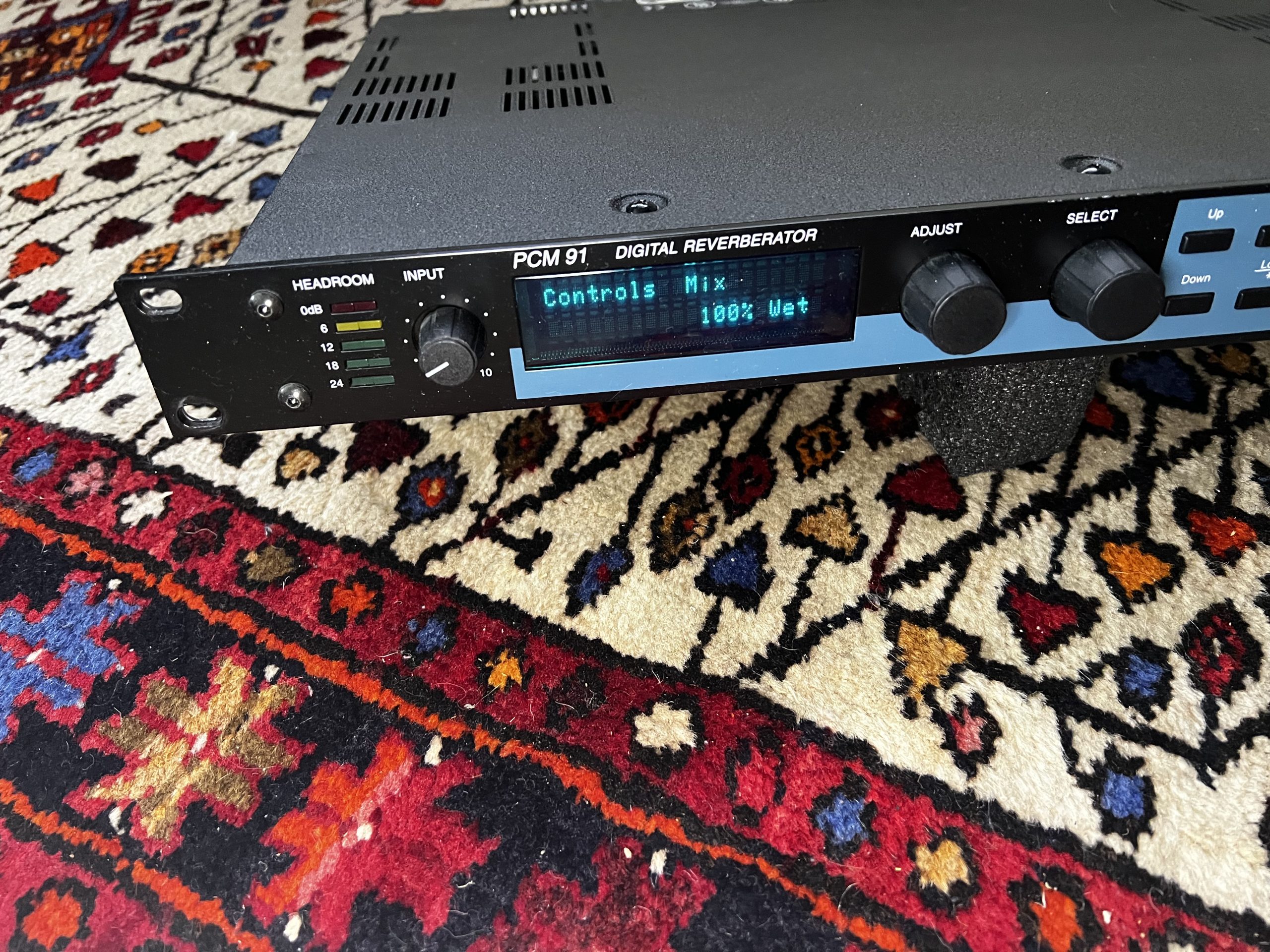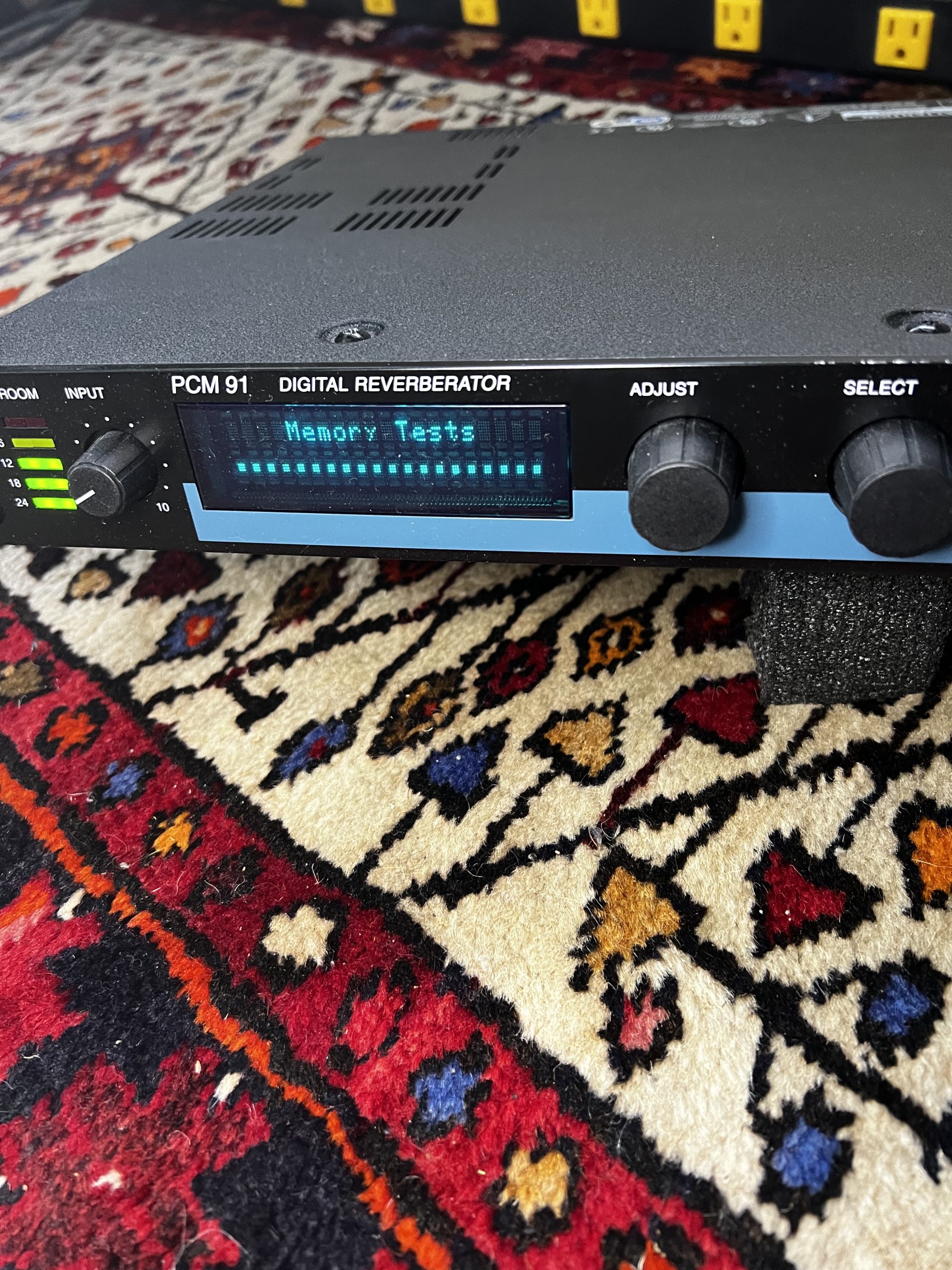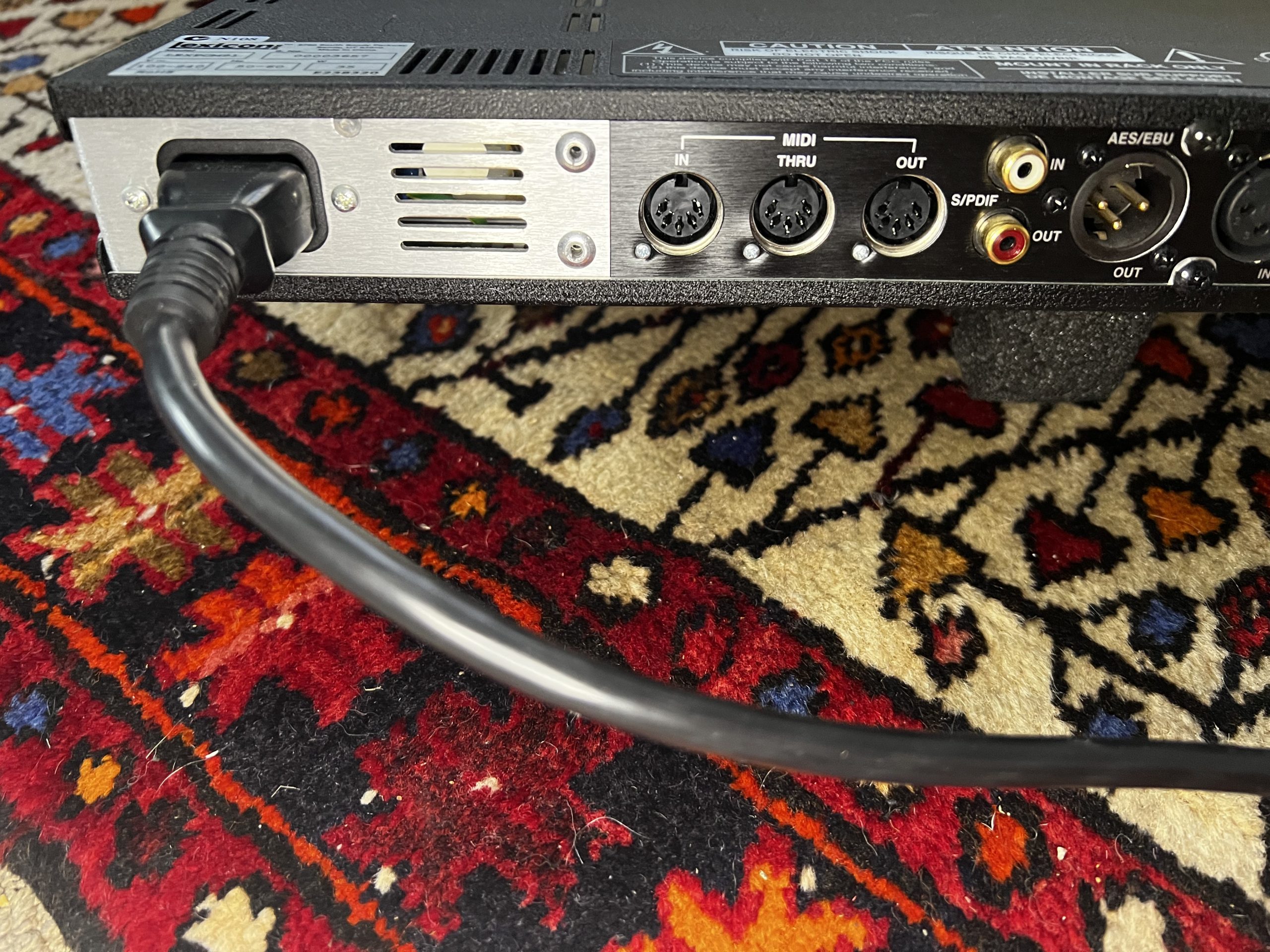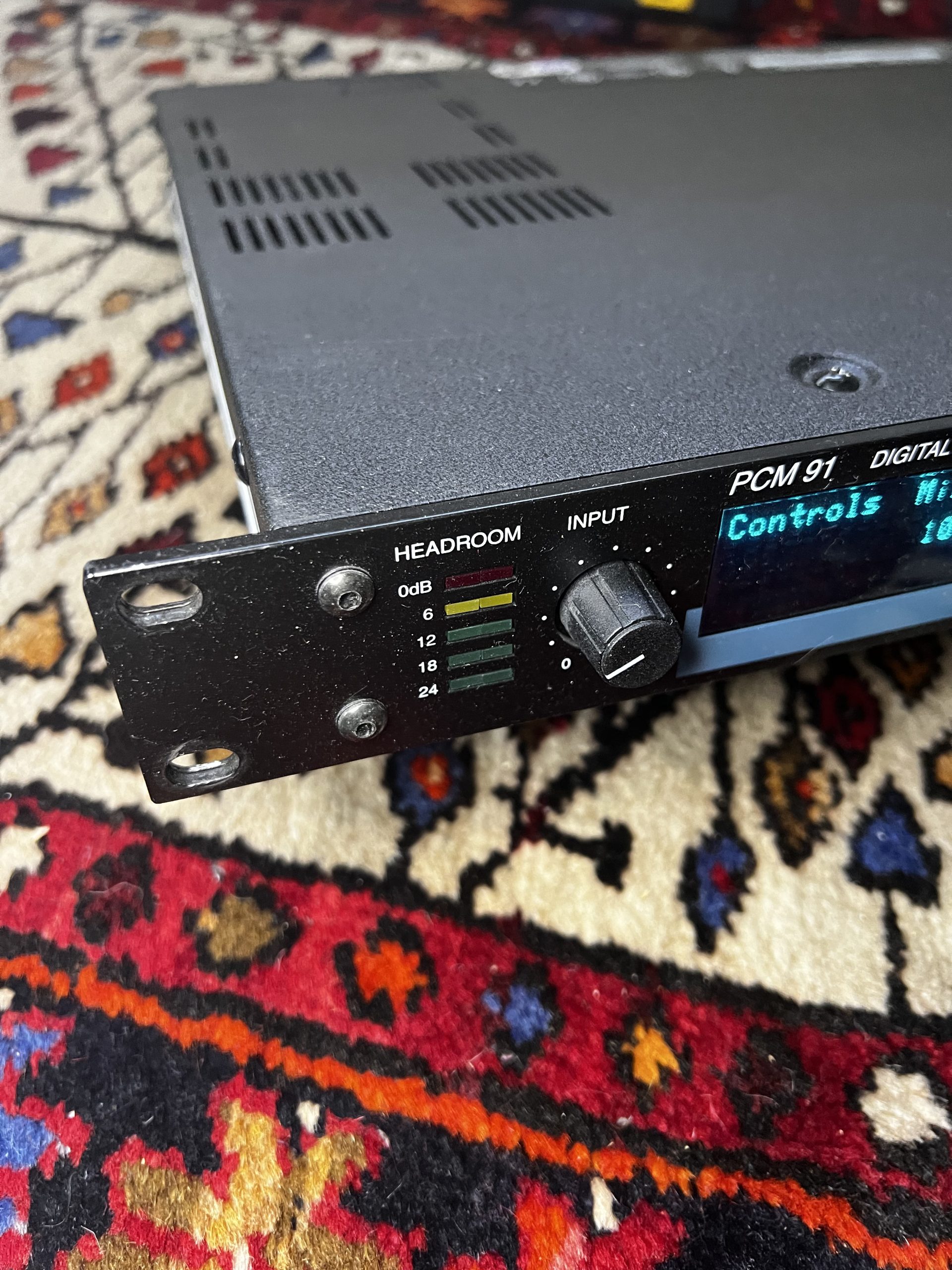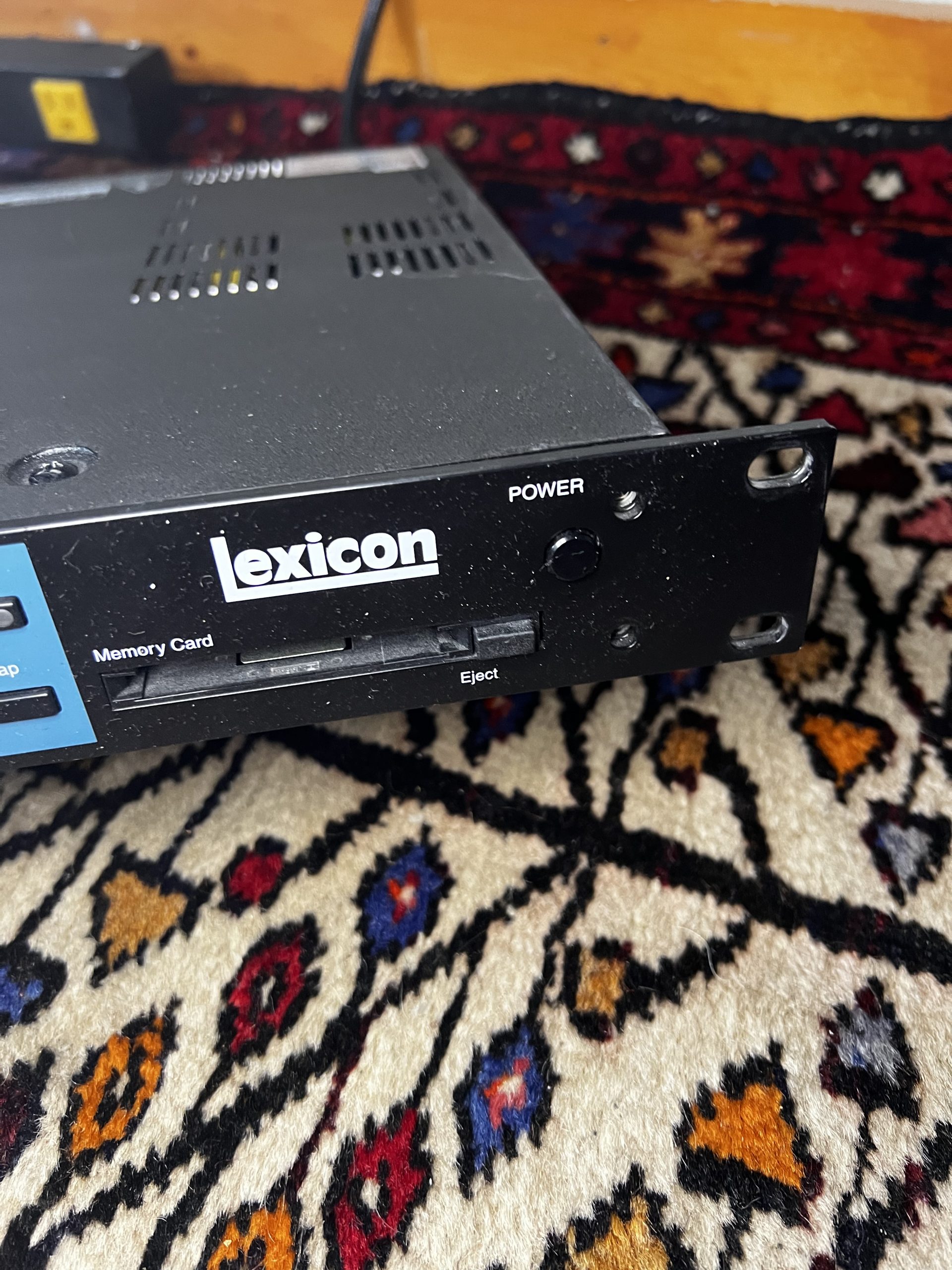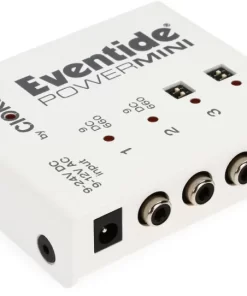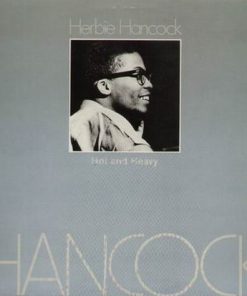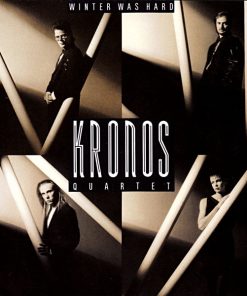Lexicon PCM81 & PCM91
As Lexicon introduce new processors to replace the acclaimed PCM80 and PCM90, Paul White takes a look at how these classic units have been further improved to create the PCM81 and 91.
You may have noticed that Lexicon’s PCM80 and 90 have been superseded by virtually identical‑looking models that still cost less than their forebears did a year ago. This has resulted in end‑of‑line 80s and 90s being offered at bargain prices — but before you all whip out your credit cards, it would be wise to see what the new models have to offer that their predecessors did not. It would also be useful to remind ourselves where these products sit in the marketplace, in particular the PCM80, which is often mistakenly perceived as a reverb unit, whereas it’s actually a very powerful effects processor that just happens to include an extremely good dedicated reverb section.
Like the PCM80, the PCM81 is built around two processing engines — a LexiChip looks after the reverb at all times, so there’s no resource sharing, and a Motorola 56002 handles the rest of the effects. This hasn’t changed, but for both the PCM81 and 91, the earlier 18‑bit input converters have been replaced by 20‑bit converters. Some people will wonder why they didn’t go the whole hog and move up to 24 bits, but the truth is that even the very best 24‑bit converter only manages a true resolution of around 21 bits. However, the internal signal path is 24‑bit, and a 24‑bit signal can be taken into the unit via the digital I/O if required.
Another new addition is a pair of AES/EBU balanced XLR digital connectors which augment the S/PDIF phono connectors already fitted to the older models. Both digital outputs are always active and present the signal in either S/PDIF or AES/EBU format depending on the digital input format selected. However, Lexicon have opted not to fit word clock inputs. According to the spec sheet, these improvements extend the signal‑to‑noise ratio and dynamic figures by around 4dB.
Technical improvements are all very well on paper, but will you be able to hear the difference? As an existing PCM90 owner and frequent PCM80 user, I’ve never had any complaints about their sound quality, but there’s more to the new models than a better signal path. The PCM81’s factory library has been extended to 300 presets, and the algorithm set now also includes the pitch‑shifting capability of the Vocal Fix card, for which PCM80 owners have to pay extra. These algorithms provide the tools to repair badly pitched vocal tracks as well as to create vocal harmonies and guitar effects, and the delay memory has been increased to a massive 20 seconds of stereo delay. Pitch may be controlled manually or via MIDI.
There are now 17 effect algorithms in all, categorised as 4‑voice, 6‑voice or pitch algorithms. The 4‑voice algorithms are Concert Hall, Plate, Chamber, Inverse and Infinite. These all combine the reverb type listed with a general‑purpose, 4‑voice effect algorithm which Lexicon refer to as a ‘toolbox’, as well as additional post‑reverb processing. The 6‑voice algorithms are Glide>Hall, Chorus + Reverb, M‑Band + Reverb, Res1>Plate and Res>Plate, where the ‘>’ symbol signifies a serial connection and the ‘+’ a parallel connection. Each of these is combined with a 6‑voice stereo effect toolbox. Finally come the Pitch algorithms: Quad>Hall, Dual>Chamb, Dual Plt, Dual Inv, Stereo Chamber, VSO‑Chamber and Pitch Correct. A number of these algorithms include parameters that make it possible to create dynamic effects that translate into surround when the signal is played back via a conventional surround sound decoder. The review model came bundled with a Dual Effects ROM card providing 25 further algorithms and 250 factory presets. This card allows the PCM80/81 to operate as a dual effects processor with each of the two inputs feeding a different effect algorithm. The two stereo effect outputs are then summed at the output to provide a composite stereo signal.
As the original PCM80 was reviewed in depth back in SOS November ’94, instead of covering all the same ground again I’m going to concentrate on what I think makes the PCM80 concept, and now the PCM81, so special. Lexicon units are sometimes criticised for being over‑complex, but that would be unfair. The truth is that they provide access to a vast number of parameters that enable the user to produce some of the most powerful and creative effects around, but you only need to get involved at this level if you want to. The effect parameters are best visualised as a matrix where the most often accessed parameters are available on the top row. As you go further down the rows, the parameters become more obscure. Lexicon do two useful things to take the pain out of operation: firstly, they have a choice of Go or Pro mode. Go mode exploits a row in the matrix known as the Soft Row where up to ten parameters can be assigned for easy access. When Go mode is selected in the global setup of the machine, only the ten most useful parameters for each algorithm are available — all the scary stuff stays out of sight. In Pro mode, you get to access anything you like. The second great idea is the Adjust knob, a rotary controller that can be assigned to control several functions at the same time. Within the factory presets, this is set up to provide a lot of control over the current effect using just a single control. For example, you could have a chorus effect where the Adjust knob controls the depth, rate and delay time simultaneously.
The test of a good reverb isn’t how long it can go, but how short it can go while still sounding real.
For the more creative effects programmer, the beauty of the PCM80/81 is that it has a modulation matrix to rival that of a modular synth, which allows the user to set up effects that vary dynamically depending on signal levels, envelopes, LFOs, incoming MIDI data, MIDI Clock tempo and a host of other things. What’s more, the PCM80/81 has Lexicon’s famous Resonant Chord program, which has to be heard to be believed. It works by setting up several delays to resonate at different musical notes, and these may be controlled via MIDI. Any sound fed into the resonators will be dramatically altered, and even unpitched sounds come out playing the notes of the selected chord — this is especially effective on percussion. The process has something in common with vocoding, but it’s not exactly the same thing and the results are sufficiently different to be worth pursuing. Indeed, you’ll hear the effect on a number of sample collections and in a good many sci‑fi film sound tracks.
All the usual modulation and delay effects can be set up, but because of the modulation capabilities and the multi‑voice architecture, these can be either very rich or very abstract — you often imagine you’re hearing a very complex multi‑effect when you’re actually listening to a single algorithm. Furthermore, any of these effects can be combined with a reverb that approaches the quality of the PCM90/91 dedicated reverbs and, because the reverb is produced by a separate dedicated processing engine, you never have to settle for a crude or coarse reverb because you’ve used up most of the DSP power generating the other effects.
The PCM91
The PCM91 features exactly the same hardware additions and refinements as the PCM81, so you have 20‑bit converters, a 24‑bit digital signal path, and AES/EBU sockets on the back. Unlike the 80‑series machines, however, the 90s are all about dedicated, high‑quality reverb, and inside the box you’ll find two LexiChips, rather than one LexiChip and one general‑purpose DSP engine. The algorithms are spin‑offs from the legendary Lexicon 480 and 300 high‑end machines, and although the PCM91 doesn’t have the same processing power as these models, it gets surprisingly close. What impresses me most about my PCM90 is the way in which it emulates small spaces with extreme realism. The test of a good reverb isn’t how long it can go, but how short it can go while still sounding real. This is especially important in modern music production as a lot of records are mixed to sound very dry, yet still alive, and a cheap reverb won’t let you do that convincingly. The PCM91 does everything the PCM90 does, but it now comes with 450 presets and 10 additional dual reverb algorithms drawn from the PCM90 Dual Reverb ROM card. In all, there are now the five stereo algorithms of the PCM90 plus the new algorithms that provide both dual‑effect operation and the ability to cascade two reverbs in series. The single algorithms include additional tools for ambience, post‑processing, compression, expansion and modulation, so even the simple reverbs don’t have to be that simple. The dual‑reverb algorithms contain two reverb algorithms plus all the modulation and patching features of the single reverbs.
Room Test
Taking the PCM81 first, this is a real powerhouse of a machine that does everything that a PCM80 plus a set of plug‑in ROM cards can do. On top of that you get more delay time, a slightly improved technical spec, and those professional AES/EBU digital connectors. As I said earlier, the PCM80 was often misunderstood — numerically, it fell between the PCM70, which was a reverb unit, and the PCM90, which was also a reverb unit, so the re was a tendency to think of the 80 as a reverb unit. The fact that it produced great reverb didn’t help clear things up. In reality, it’s a hugely flexible multi‑effects processor capable of producing both the weird and the wonderful, and although it doesn’t let you cascade 10 effects at once, it often sounds richer and more complex than those processors that do. What’s more, its vast library of effects, plus the two‑tier editing system, make it easy to tweak a patch and then store it as your own if you don’t want to program something from scratch.
Lexicon seem to be one of those high‑end companies that don’t mind bringing a cheaper product to market if they can still do it properly.
The additional pitch algorithms are well worth having, and although they can’t match the ability of Antares’ Autotune software to patch up suspect vocal takes, they do provide a number of useful and practical tools that allow you to fix the odd off‑key syllable or word. They also provide a means to create the more familiar pitch‑based special effects. The pitch‑shift section includes intelligent algorithms that adapt their splicing regime to the pitch of monophonic signals for much smoother pitch‑shifting so that, when you’re harmonising a single line or correcting the pitch of an off‑key lyric, you get far less of that unwanted burbling that afflicts most general‑purpose pitch‑shifters.
The PCM91 is simply a logical extension of the PCM90, and putting the dual algorithms in the box as standard, rather than charging extra for them, really helps when you want two really high‑quality reverbs at the same time. What’s more, moving some of the algorithms from cards into the standard box means that the card slot remains free for running other algorithms or patches. This really is an exceptional reverb processor at the price, which features acoustic environments that other machines would never dare attempt. The small rooms are exceptional, but if you want the big Lexicon cathedral or concert hall, they’re in here too. And with so many library patches, there’s a ready‑made preset for just about every occasion.
Summary
Lexicon seem to be one of those high‑end companies that don’t mind bringing a cheaper product to market if they can still do it properly. Their MPX1 multi‑effects processor is currently excellent value, though compared to the PCM81 it behaves more like a conventional multi‑effects processor in which several effect algorithms are combined to produce an end result. The PCM81 takes more of an holistic approach in which a single effect algorithm provides all the complexity and movement that’s needed. If you want lo‑fi effects, vinyl scratches or simulated analogue filters, then the PCM81 won’t satisfy you, but if you need clean, powerful, and sonically complex effects capable of baffling the senses — or if you need access to the more conventional delay, pitch and modulation effects but to an impeccably high standard — then the PCM81 should make you very happy. The only less‑than‑pristine aspect of the machine is the pitch‑shifter’s slight warble when shifting polyphonic source material over a large range, but that’s not surprising when you consider what a good dedicated pitch‑shifter costs, and the PCM81 still performs better than most.
For pure reverb, the PCM91 is probably the next best thing to a Lexicon 480 or 300, and it’s my bet that in a typical mix there are few people, including studio engineers, who would know the difference. And even though the PCM91’s brief is pure reverb, the modulation and delay parameters mean you can create quite a few treatments that encroach on the realm of special effects if you need to. In dual‑effects mode, each algorithm runs on its own LexiChip, so the reverb quality is still excellent and, as with the PCM81, there are so many great library patches that you don’t have to get bogged down in heavy editing to get what you want.
Pros
- Dedicated LexiChip means superb reverb at all times, even when other effects are in use.
- Previously card‑only algorithms now included as standard.
- Digital I/O on balanced AES/EBU connectors as well as S/PDIF.
- 20‑bit A‑D converters replace the 18‑bit converters of their predecessors.
Cons
- PCM81’s pitch‑shifter exhibits some warble on polyphonic sources when shifting over a large range.
Summary
Versatile processors with outstanding audio quality that build very successfully on their recent forebears.



